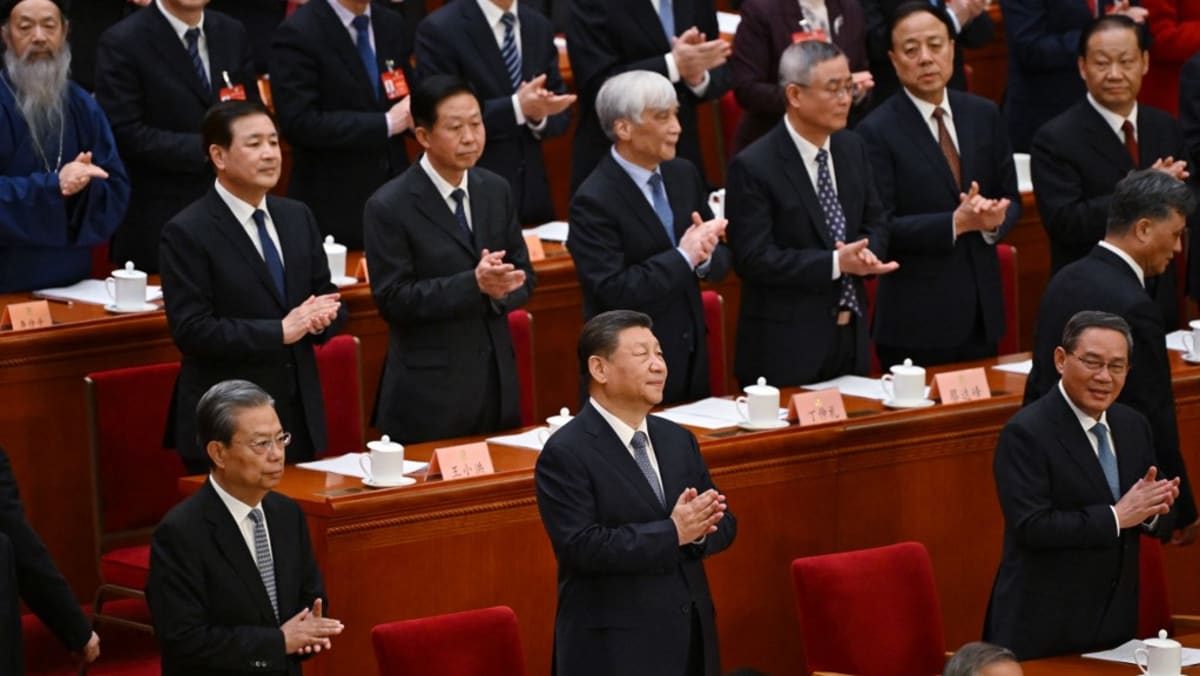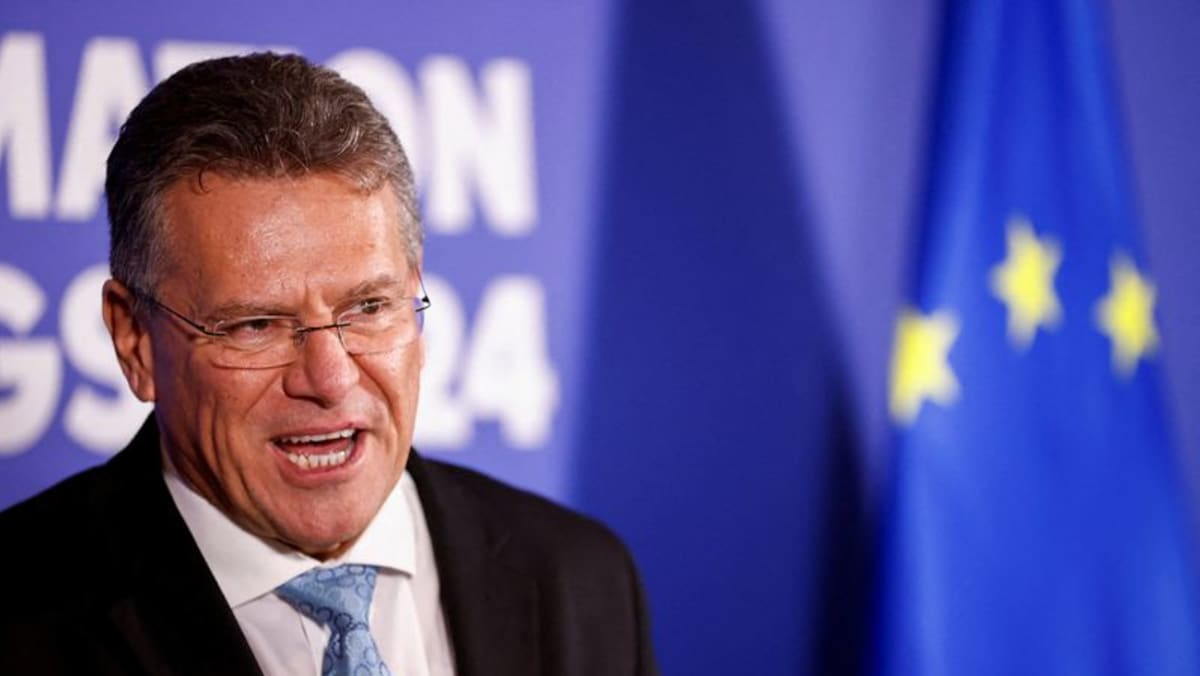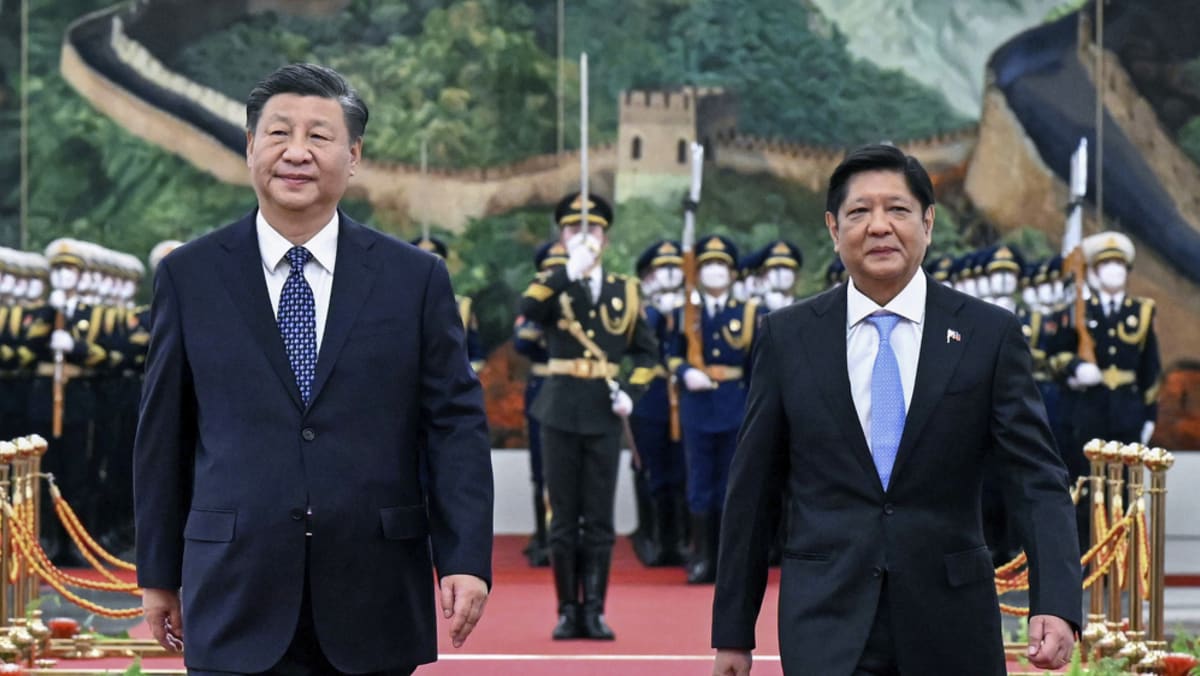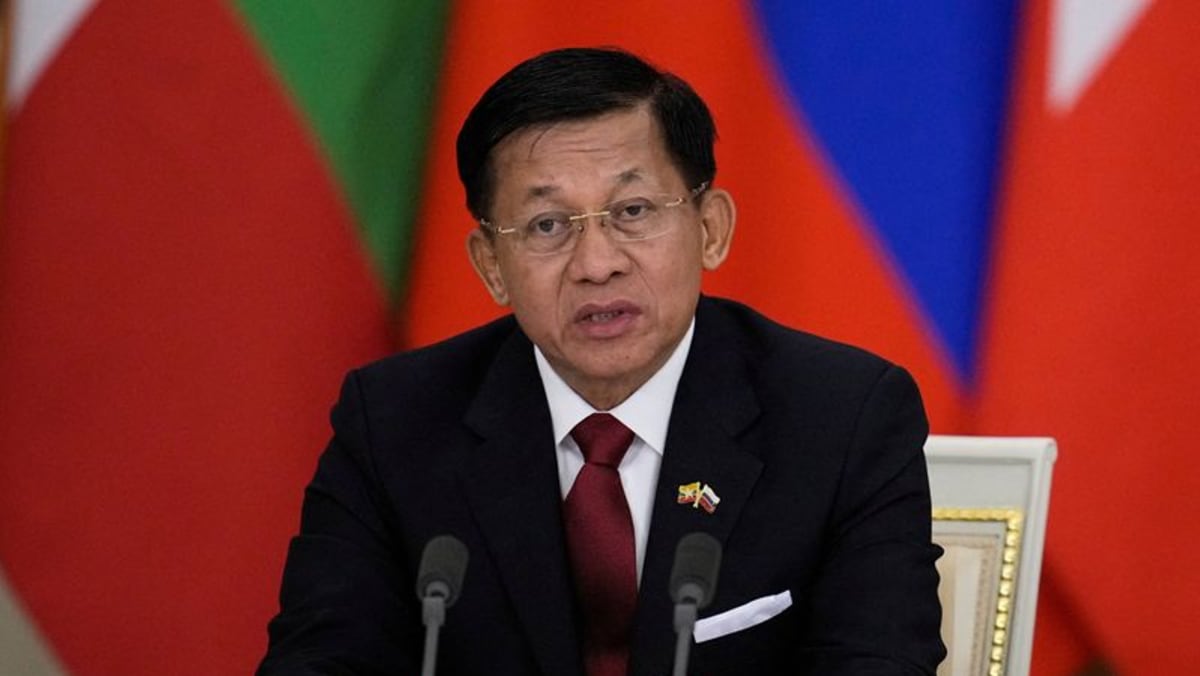China vows to ‘transform’ economy, targets stable growth of around 5%

BEIJING: China will target economic growth of about 5 per cent this year as it works to transform its development model, curb industrial overcapacity, defuse property sector risks and cut wasteful spending by local governments, Premier Li Qiang said on Tuesday (Mar 5).
Li delivered his maiden work report at the annual meeting of the National People’s Congress (NPC), China’s legislature, in the cavernous Great Hall of the People in Tiananmen Square.
The growth target was similar to last year’s but will require stronger government stimulus for China to reach it, as the economy remains reliant on state investments in infrastructure that have led to a mountain of municipal debt.
A stuttering post-COVID recovery in the past year has laid bare China’s deep structural imbalances, from weak household consumption to increasingly lower returns on investment, prompting calls for a new development model.
A property crisis, deepening deflation, a stock market rout, and mounting local government debt woes have increased the pressure on China’s leaders to respond to these calls.
“We should not lose sight of worst-case scenarios and should be well prepared for all risks and challenges,” Li said.
“In particular, we must push ahead with transforming the growth model, making structural adjustments, improving quality, and enhancing performance.”
There were no immediate details on the changes China intended to implement.
Chinese stocks recovered earlier losses to trade largely unchanged on the day and the yuan was flat, suggesting investors were unimpressed with the stimulus plans and reform promises.
“Policymakers seem happy with the current trajectory,” said Ben Bennett, Asia-Pacific investment strategist at Legal And General Investment Management, adding the economic targets were “as expected”.
“That’s disappointing for those that hoped for a bigger push … There’s rhetorical support for local government debt and the property sector, but the key is how this is applied in practice.”
In setting the growth target, policymakers “have taken into account the need to boost employment and incomes and prevent and defuse risks”, Li said, adding China intended to have a “proactive” fiscal stance and “prudent” monetary policy.
China plans to run a budget deficit of 3 per cent of economic output, down from a revised 3.8 per cent last year. But crucially, it plans to issue 1 trillion yuan (US$139 billion) in special ultra-long-term treasury bonds, which are not included in the budget.
The special bond issuance quota for local governments was set at 3.9 trillion yuan, versus 3.8 trillion yuan in 2023. China also set the consumer inflation target at 3 per cent and aims to create more than 12 million urban jobs this year, keeping the jobless rate at about 5.5 per cent.
“The Chinese government does not want to stimulate the economy too much, … and also wants to keep leverage relatively low,” said Xia Qingjie, economics professor at Peking University. The budget deficit target can be adjusted later this year, if needed, Xia added.
Analysts expect China to lower its annual growth ambitions in the future. The International Monetary Fund projects China’s economic growth at 4.6 per cent this year, declining further in the medium term to about 3.5 per cent in 2028.
Source: CNA















